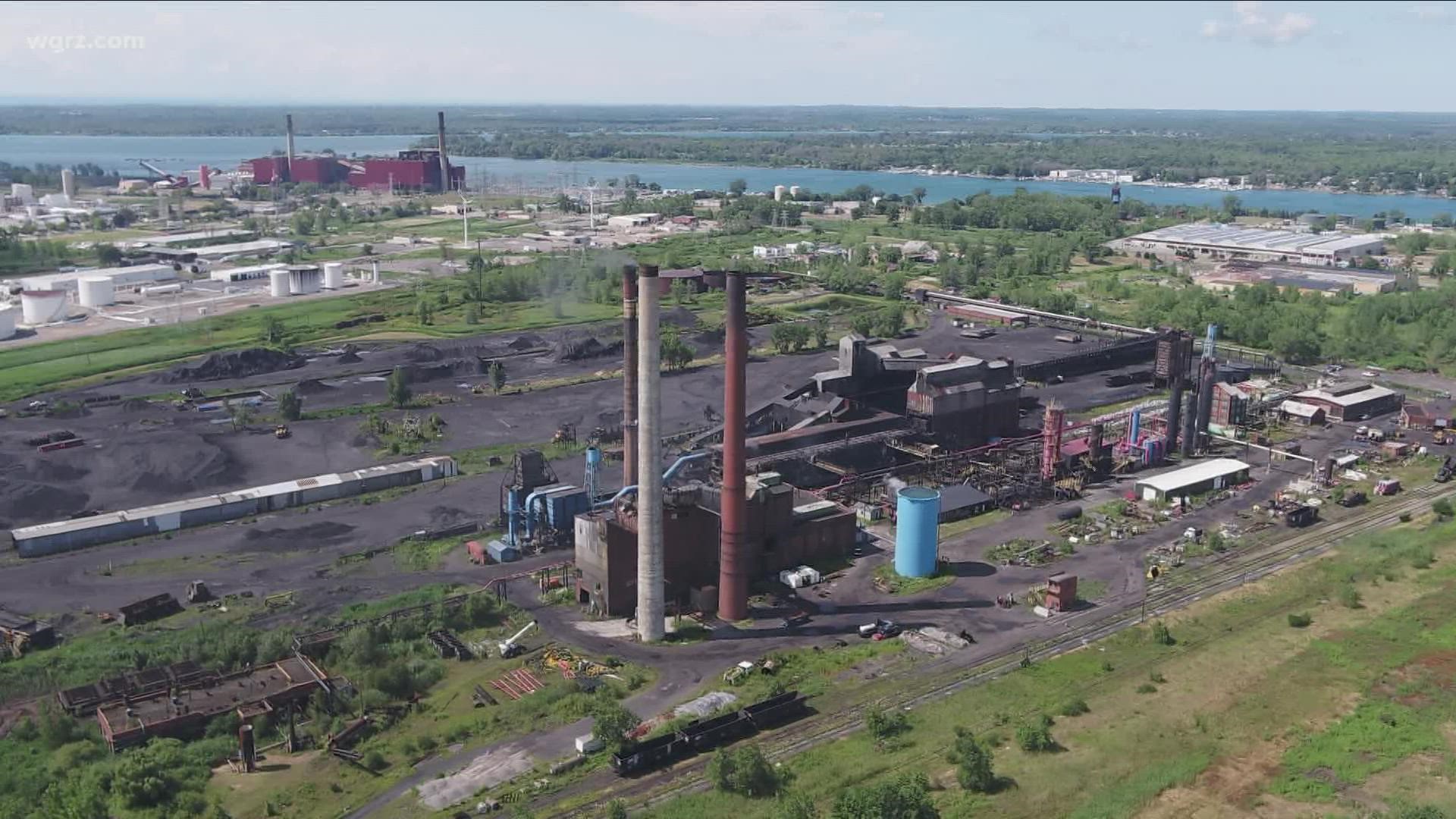TONAWANDA, N.Y. — Scientists from the Tonawanda Coke Soil Study hosted a community meeting Thursday evening to share the final results of the research with the public.
Researchers investigated soil pollution in communities that may have been in the path of emissions from the former Tonawanda Coke Corporation plant.
A federal judge ordered Tonawanda Coke to fund the research after the company was convicted of violating the Clean Air Act and Resource Conservation and Recovery Act.
Beginning in 2017, scientists worked with community members to collect over 350 soil samples from properties in the City of Tonawanda, Town of Tonawanda, Kenmore, Grand Island and a small section of Buffalo.
The research team then tested the soil samples for a variety of chemicals, and worked to understand whether certain pollutants may have originated at Tonawanda Coke.
Read the key findings from the study below:
Key findings from the Tonawanda Coke Soil Study include the following:
Scientists believe that pollution from Tonawanda Coke left an imprint on the local community.
Researchers found evidence that the former Tonawanda Coke plant likely contributed to elevated levels of polycyclic aromatic hydrocarbons (PAHs) discovered on certain properties near the plant, but the team could not draw this conclusion with the “level of confidence” that would be required for a peer-reviewed journal study said University at Buffalo Professor Joseph Gardella.
To assess whether a portion of the PAHs found originated at Tonawanda Coke, scientists considered a variety of factors, including geography, prevailing winds, and the chemical make-up of Tonawanda Coke’s coke product and soil from the Tonawanda Coke site.
This analysis identified similarities in the chemical make-up of the Tonawanda Coke samples and the soil samples from the community that had elevated PAH concentrations, Researcher Tammy Milillo says.
“Where elevated levels of PAHs were found, we can say that Tonawanda Coke almost certainly contributed to these elevated levels. But given the types of local industries and land use history of the area, we cannot declare that they are the sole contributors,” she says, noting that sources of uncertainty in the analysis include the fact that the team could not obtain reference samples from the shuttered Huntley coal-fired power plant and other nearby industrial sources that may have released similar pollutants as Tonawanda Coke.
Elevated PAH levels were discovered on some properties near the Tonawanda Coke plant. However, residential neighborhoods near the plant do not appear to be systematically contaminated, scientists say.
The study team identified elevated PAH levels on a limited number of properties in two regions of interest: An area in the Town of Tonawanda that lies around and to the east of the Tonawanda Coke plant, and an area in the City of Tonawanda that sits to the northeast of the plant. However, soil contamination can vary significantly between and even within properties, and many other soil samples taken in the regions of interest did not have elevated PAH levels, scientists say.
“From a geographic perspective, the sites and homes with elevated PAH levels were sporadic within the regions where they were found,” Tammy Milillo says. She adds that in cases where high PAH concentrations were discovered, it was at a 6-inch depth, so there “is limited potential for exposure danger” for residents.
In general, scientists note that large areas of the broader study area were found to be free of systematic contamination by PAHs and other selected pollutants.
“We didn’t find a lot of systematic contamination in residential areas. We found spots,” Gardella says. “The biggest benefit is that for many people who live close to the plant, who worried that they were living in a toxic area, the contamination overall was not as bad as they thought it might be. Until you get the data, you don’t know. Sometimes, residents want testing and government agencies won’t provide it, so one of the big benefits of this study is that it enabled a significant amount of residential soil testing.”
“That said,” he adds, “there were individual properties that had significant levels of contamination, and we gave that information to residents and explained it so they could decide what they wanted to do.”
As a result of the study, soil pollution was detected and remediated at two elementary schools.
The study stated, “This contamination was found as a result of our analysis; however, it was unrelated to [Tonawanda Coke Corp.]. The research team reached out to appropriate school district officials, who worked with the research team and the New York State Department of Health (NYS-DOH) to immediately remediate the affected parking lot and playground areas.”

